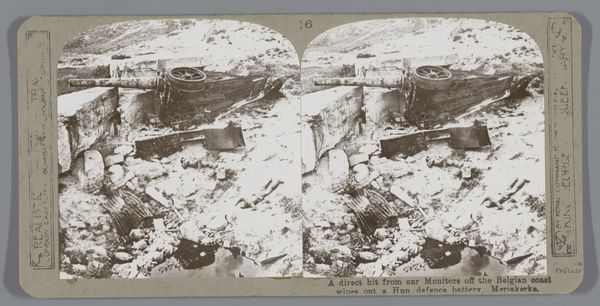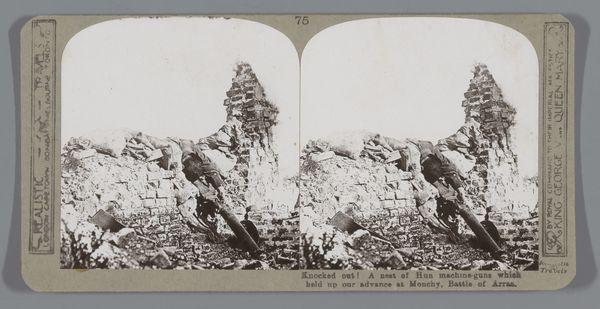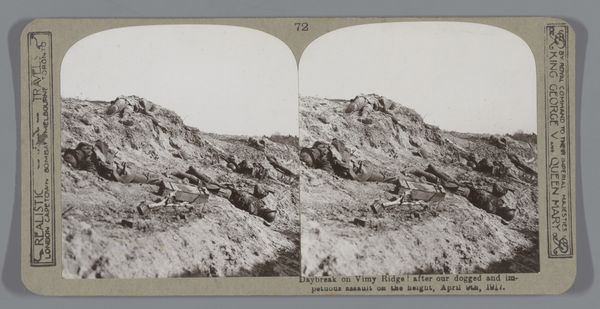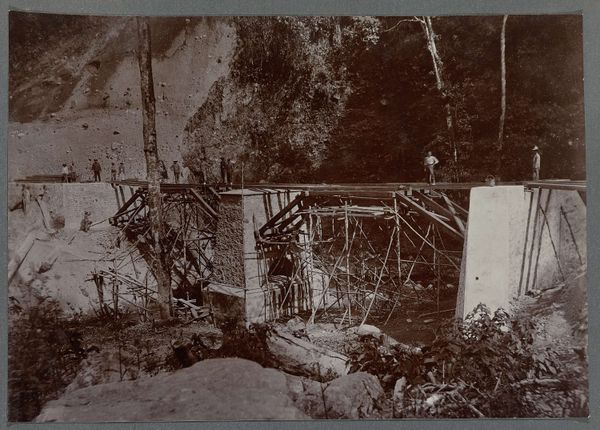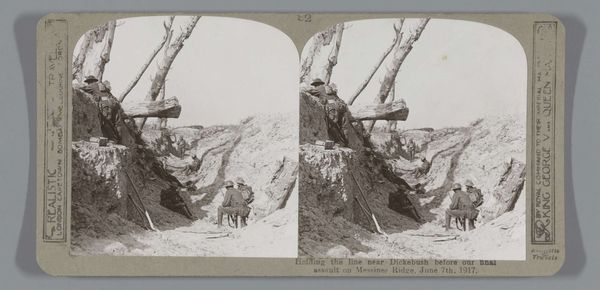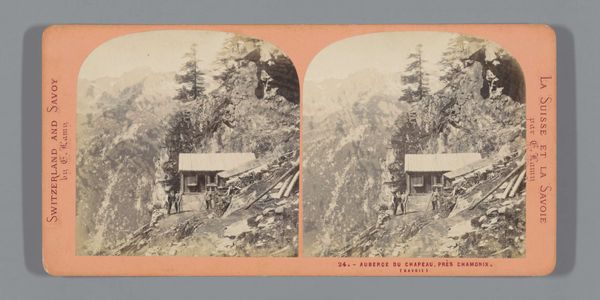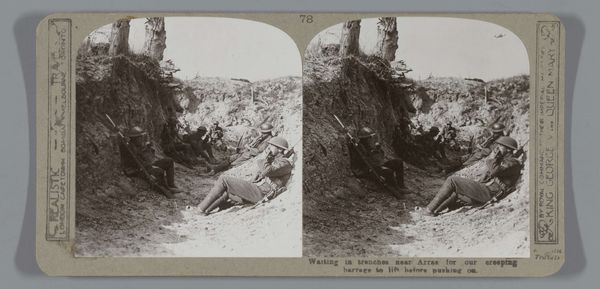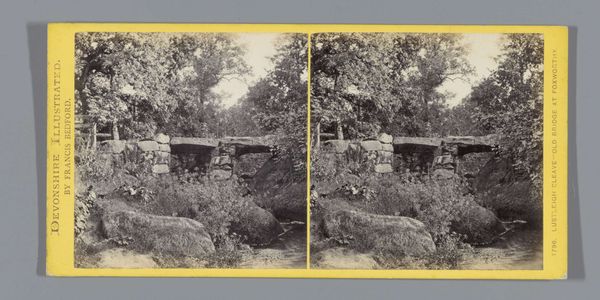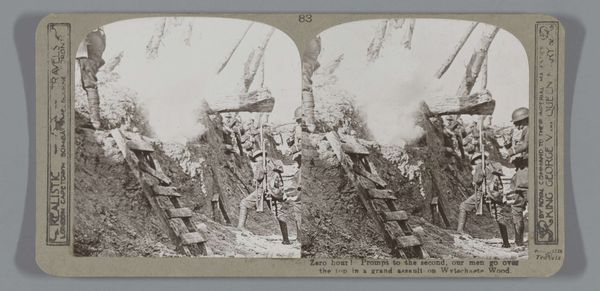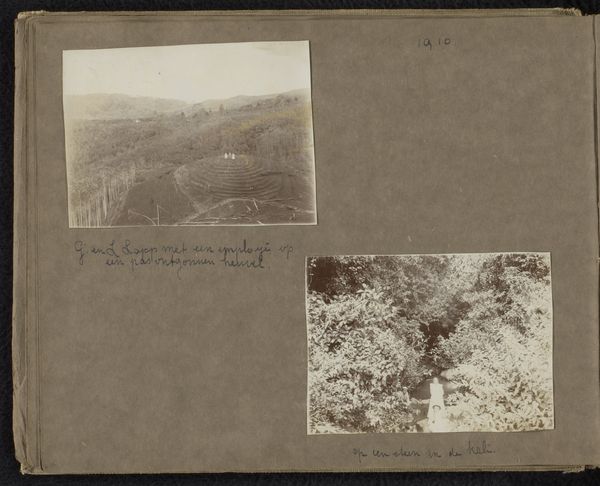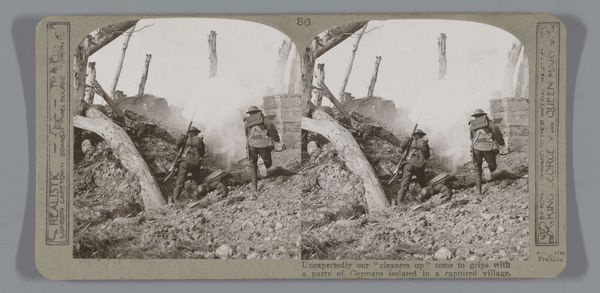
Formidable Hun "pill-box" at Bullecourt-scene of sanguinary fighting during the Battle of Arras 1917
0:00
0:00
photography, gelatin-silver-print
#
landscape
#
photography
#
gelatin-silver-print
#
history-painting
#
realism
#
monochrome
Dimensions: height 85 mm, width 170 mm
Copyright: Rijks Museum: Open Domain
Editor: This is a gelatin-silver print photograph from 1917 titled "Formidable Hun 'pill-box' at Bullecourt - scene of sanguinary fighting during the Battle of Arras." It feels very stark, like a brutal, unsentimental depiction of war. What does this image tell you? Curator: This photograph, with its straightforward depiction of a German pillbox, operates within a specific socio-political context. The title itself uses the loaded term "Hun," a derogatory label for Germans, particularly common in Allied propaganda during World War I. This image isn't just documenting a structure; it's contributing to the construction of national identity and wartime narratives. How do you see that? Editor: It’s a propaganda tool. But what purpose does the realistic depiction serve? Is it meant to instill fear, or…pride that such obstacles are being overcome? Curator: I think it’s more nuanced. The "realism" – and we should always question whose "realism" is being presented – is deployed to lend credibility to the propaganda. This isn’t some fantastical enemy; it’s a concrete, tangible one. Showing this ‘formidable’ pillbox might instill fear, yes, but also resolve. The message could be: "Look at the strength of the enemy we face, and therefore the magnitude of our struggle, but we *will* overcome it.” Where would images like these appear, and how do you think they were consumed by the public? Editor: Maybe in newspapers or displayed in public spaces… like a call to action. The very existence of an image like this implies some form of public display. Now, thinking about it as an intentionally circulated image, my perspective is definitely changing. Curator: Exactly. Consider who controlled the image, who disseminated it, and to what effect. It pushes us to consider photography not simply as a recorder of events, but as an active participant in shaping historical understanding and manipulating public opinion. It's crucial to analyze whose perspective is being privileged. Editor: This makes me think a lot about the narratives we’re creating when presenting art. The labels we use and the context we provide can shape public opinion in a powerful way. Curator: Precisely. Understanding the social and political context surrounding a work of art, like this photograph, enables us to unpack those layers of meaning and understand its role in the historical landscape.
Comments
No comments
Be the first to comment and join the conversation on the ultimate creative platform.
